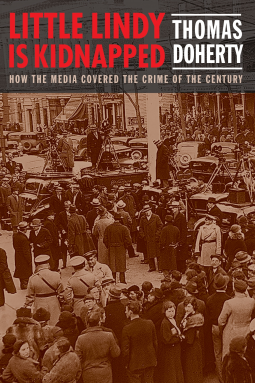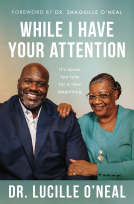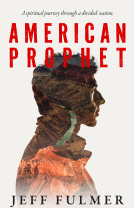
Little Lindy Is Kidnapped
How the Media Covered the Crime of the Century
by Thomas Doherty
This title was previously available on NetGalley and is now archived.
Send NetGalley books directly to your Kindle or Kindle app
1
To read on a Kindle or Kindle app, please add kindle@netgalley.com as an approved email address to receive files in your Amazon account. Click here for step-by-step instructions.
2
Also find your Kindle email address within your Amazon account, and enter it here.
Pub Date Nov 03 2020 | Archive Date Feb 05 2021
Talking about this book? Use #LittleLindyisKidnapped #NetGalley. More hashtag tips!
Description
In Little Lindy Is Kidnapped, Thomas Doherty offers a lively and comprehensive cultural history of the media coverage of the abduction and its aftermath. Beginning with Lindbergh’s ascent to fame and proceeding through the trial and execution of the accused kidnapper, Doherty traces how newspapers, radio, and newsreels reported on what was dubbed the “crime of the century.” He casts the affair as a transformative moment for American journalism, analyzing how the case presented new challenges and opportunities for each branch of the media in the days before the rise of television. Coverage of the Lindbergh story, Doherty reveals, set the template for the way the media would treat breaking news ever after. An engrossing account of an endlessly fascinating case, Little Lindy Is Kidnapped sheds new light on an enduring quality of journalism ever since: the media’s eye on a crucial part of the story—itself.
Available Editions
| EDITION | Other Format |
| ISBN | 9780231198486 |
| PRICE | $27.95 (USD) |
Average rating from 10 members
Featured Reviews
 Mike M, Media/Journalist
Mike M, Media/Journalist
Just when you think you have heard everything about the Lindburg kidnapping, out comes another book that traces yet another angle of the story. Fortunately, this is one book you should not miss.
An exhaustive look at the media coverage of the Lindbergh baby kidnapping. But more than that, it’s an examination of how media evolved during that critical period when radio was developing and news reels were emerging. It’s almost comforting to know that the importance of actual journalists was undercut nearly 100 years ago. That radio “swiped” the information from newspaper journalists and rushed it on air, beating the print edition, is a precursor to our age of the internet. The coverage of the original “Trial of the Century” was alarmingly similar to the most recent trial by the same name. There are so many layers to this extremely well-written book that I can’t cover them all. However, that the author could cause me to tear up in his descriptions of Mrs Lindbergh’s stoic testimony at the trial of her baby’s accused murderer is evidence of exceptional talent.
Thanks to NetGalley and the publisher for the opportunity to read this book.
Doherty writes an interesting account of the kidnapping of Charles Lindbergh's toddler son with an emphasis on how it changed news reporting. It sounds like it might be a bit dry, but I found it very compelling.
 Reviewer 511457
Reviewer 511457
In the mid-1990’s, I latched on to the Lindbergh kidnapping for some reason. Maybe the seed was planted while I was in high school, when a documentary came out and my World History teacher made a comment that implied maybe the wrong man was sentenced to death based on new evidence. While scouring bookstores with my then-boyfriend (now husband), I found quite a few books written about Lindbergh and the kidnapping. Each book came to a different conclusion than the last one on the Lindbergh kidnapping, and I never came to my own conclusion myself.
So when I saw Little Lindy is Kidnapped was available as an Advanced Readers Copy (ARC) on NetGalley, I requested it. I was curious to read, in this age of media manipulation, how the press of 1932-1935 handled the “Crime of the Century.” All opinions in this review are my own.
Some background: Charles Lindbergh was the first person to fly from New York to Paris in a 33-hour flight, in 1927, when planes were still in their infancy stage. He was proclaimed a hero, a massive ticker tape parade was held for him in New York upon his return (some say it was the largest New York had ever seen), and no matter what he said (very little) or did (a lot of experimental aviation), people wanted to know about it.
However, Lindbergh was a very private man. He chose an equally private and intelligent wife, Anne Morrow. The hounding of the press was unheard of in it’s day; even the top Hollywood stars did not have to deal with so much press. So the Lindbergh’s decided to build a house in the remote town of Hopewell, New Jersey, near Anne’s parent’s estate.
The house was still under construction in 1932 when the kidnapping took place. Twenty-month old Charles Lindbergh, Jr. was taken from his second-story bedroom on a night when the Lindbergh’s were not normally at the estate; they had only stayed there and not travelled to their other home because Little Lindy had a cold. A ransom note was left by the windowsill with an unusual marking.
The result was pandemonium. Colonel Norman Schwarzkopf of the New Jersey State Patrol (and father to the General Norman Schwarzkopf of the 1991 Gulf War fame) and the law enforcement officials in both New Jersey and New York didn’t so much take control, as let Charles Lindbergh make important decisions in how to investigate the crime.
The Lindbergh kidnapping was a boon to newspapers, radio stations and newsreel makers. Little Lindy is Kidnapped explores the who, what, where and why of the news coverage. During the investigation, radio won the day, as their updates were near instantaneous. In an age when more and more homes were buying radio, despite there being a Great Depression on, just shows the pull that radio had on the nation. Newspapers published several editions of their papers each day, updated with the latest information. Newsreels filmed the press conferences and the other reporters on scene, as the Lindbergh’s rarely gave statements themselves.
Surprisingly, Hollywood movies did not take the bait and start churning out kidnapping movies. There were a few minor movies in the pipeline, but they were heavily censored, and then in 1934, the Hays Code was implemented, and for the next 30 years, kidnapping was not allowed on the big screen.
For ten weeks, the press camped out near Hopewell, New Jersey for the latest updates, reporting even the slightest thing. The only times Charles Lindbergh addressed the press was to request for privacy during the trying time. Walter Lippmann of the New York Herald-Tribune even turned on his fellow journalists and told the newspapers to “call off their reporters and detectives and let Colonel Lindbergh alone.” Nothing worked. The press would not let up on the hottest story of the decade.
The FBI was finally called in, and the U.S. Treasury Department came up with the idea of paying the ransom with “gold certificate” bills. Franklin Roosevelt, as president, was moving the U.S. currency off the gold standard and all gold certificate bills had to be turned in to the banks in exchange for new bills by a certain date. The Treasury Department kept a list of all the bills in the ransom package.
The ransom was paid to a man nicknamed “Cemetery John” based on where the handoff took place, and Lindbergh and the intermediary said the man spoke with a German accent. And then nothing happened. The intermediary heard nothing back from the abductor about the safe return of Little Lindy. Then, ten weeks after the kidnapping, a laborer walked into the Sourland woods on Mount Rose Hill in New Jersey to relieve himself and stumbled upon a skull and a baby’s foot sticking up out of the underbrush.
So the kidnapping investigation became a murder investigation. For two years, there was little information released. The list of marked gold certificate bills was released to banks and businesses and were told to look out for those passing the bills. Over those two years, the press would report on where the bills were passed. The FBI and Treasury Department had narrowed down the suspect’s location to the Bronx in New York.
Finally, an astute gas station attendant received a gold certificate bill, now pretty much out of circulation, and struck up a conversation with the man who gave it to him. The man said he still had a lot of them back at home. The gas station attendant was smart enough to write the license plate number down. And that was how Bruno Richard Hauptman was captured.
The trial was a media circus. There was an attempt to keep the radio and newsreel press out, but after much jockeying, it was agreed that the newsreel people could have a camera in the courtroom if they only shot when court was not in session; they surreptitiously filmed during the trial anyway. And somehow a microphone was repeatedly hidden in the courtroom.
When the trial was in session, crowds of up to 100,000 packed the streets. Vendors started selling souvenirs like Lindbergh ladders (key evidence in the case), local restaurants had Lindbergh-themed meals, and in general, just to gawk at the key players in the case. All the while the press was reporting every scrap of information possible as well as a fair amount of conjecture.
Quickly, it became clear that Hauptman was the ultimate bad guy. An immigrant from Germany, a country the U.S. had just fought in a war not so long ago, who spoke highly of the new German leader, Adolf Hitler. Some in the press played this up to the hilt.
Hauptman was naturally found guilty and sentenced to death by electric chair. This was another media maelstrom. The press was not invited to witness, but that didn’t stop the radio reporters from counting down to the minute Hauptman was executed. When the execution was delayed by about half an hour, radio personalities had to ad-lib.
The press, sadly, never left the Lindbergh’s alone. Anne had given birth to another boy before Hauptman was caught, and eventually the Lindbergh’s fled to England to live in peace. They returned in 1939, with a decidedly different Lindbergh: an appeaser who thought highly of Adolf Hitler and prominent spokesman of America First Committee, the nation’s largest isolationist group. Suddenly less and less people were interested in what Lindbergh had to say.
Little Lindy is Kidnapped is a very interesting take on how the press played a big part in the story of the Lindbergh kidnapping. Sometimes they became the story. In today’s world, endless coverage of an event is commonplace with so many media outlets. Back in the 1930’s, with very few media outlets, the reporters and photographers found a way to create endless coverage. The closest thing I can recall of wall-to-wall coverage of an event was the O.J. Simpson murder trial of the 1990’s. After that, channels like Court TV became commonplace. The reporters and photographers of the 1930’s were decades ahead of their time.
Little Lindy is Kidnapped is being released to the general public on November 3, 2020.
 Susan E, Reviewer
Susan E, Reviewer
The term 'media circus' was the first thing that came to mind when I started reading this excellent book. The kidnapping of the Lindbergh baby on March 1, 1932 planted the seed that gave us the O.J. Simpson investigation and trial. I have read a few books about the kidnapping over the years but I found this book to read more like a novel. The writing flows very well and I found myself saying 'just one more page' way too many times. The author's approach to the crime and trial via the media angle was fascinating and it did have me making connections to the OJ crime and trial.
News had been newspaper only until Lucky Lindy flew solo to France. Radio was new and not many people owned one in the Depression. Film was taking its share of the media market and it all came together to make Lindy a larger than life hero. America couldn't get enough of him. When tragedy struck his family, American went crazy. The authors description of the small New Jersey town the Lindbergh's called home as it had to handle the massive number of reporters who descended upon the very small town. As one reporter put it, "The little town of Hopewell, 12 miles from Trenton, is the only community in the country that has gotten over the Depression". The police, then the FBI and the Treasury Department all joined the investigation but Lindbergh was the one calling the shots. The investigation became a fiasco. Americans wanted to know every little detail, start to finish.
A couple of things stuck with me - the fact that the crime scene was trampled and evidence wasn't gathered, not even on a very basic level. Later, during the trial, the judge allowed it to be filmed under strict rules. When the cameramen secretly filmed and then got caught the result was that they were sent packing and missed out on filming the verdict. Today we have a steady diet of the likes of Court TV and various CSI series so reading about the early days of media coverage was an eye opener. I enjoyed it start to finish.
My thanks to the publisher, Columbia University Press and NetGalley for giving me an advance copy in exchange for my honest review.
 Krista S, Educator
Krista S, Educator
"Little Lindy is Kidnapped" is the title of Thomas Doherty's media history of the tragic saga of the Lindbergh baby.
What's good: The book separates out different strands of media--newsreels, TV, radio, print--to discuss how they engaged with the Lindbergh saga over time. The book dips into what Lindbergh himself represented to the American public both before and after the murder of his child; it doesn't flinch from discussing Lindbergh's later Nazi history. Doherty sets the crime and the repercussions of its covering in the context of American media history, including other famous moments of news media interaction with major court cases and the development of popular film.
What's iffier: It's unfair to blame a book for what it isn't meant to be. That said, for those reading the book due to interest in the crime, you're not going to get an in-depth discussion of the investigation, evidence, or theories here. This isn't a true crime book--it is a cultural study of media history.
Note: I reviewed this book based on an ARC given me by NetGalley.
Readers who liked this book also liked:
Marie Bostwick
Historical Fiction, Literary Fiction, Women's Fiction
ReShonda Tate
General Fiction (Adult), Historical Fiction, Multicultural Interest
Scott Michael LeRette
Biographies & Memoirs, Christian, Parenting, Families, Relationships
Jeff Fulmer
General Fiction (Adult), Politics & Current Affairs, Religion & Spirituality


















